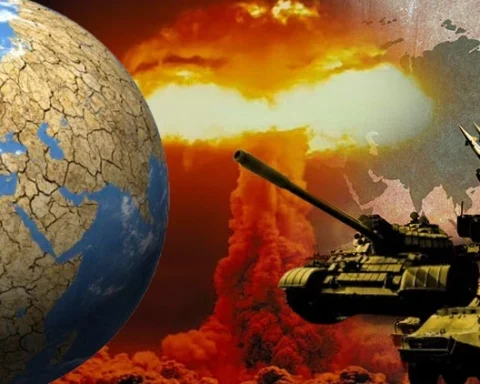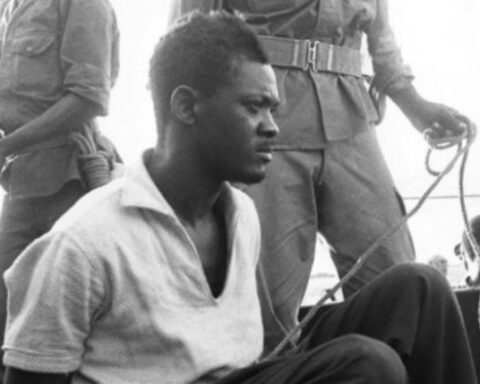To finish the job, the Trump administration must double down on economic sanctions, strengthen U.S. military deterrence in the region, and work with regional allies to dismantle Iran’s remaining influence.
Iran has lost its grip on Syria, and its influence in Lebanon is loosening, signaling not just a regional shift but a seismic collapse that echoes the fall of communism in 1989 when the Berlin Wall’s destruction heralded the unraveling of Soviet power.
The total collapse of Bashar al-Assad’s regime in Syria and Lebanon’s political upheaval mirror the events preceding the Soviet Union’s fall. Tehran’s reckless interventions in the Middle East, much like the USSR’s invasion of Afghanistan and its satellite control throughout Eastern Europe, have backfired catastrophically, eroding its power and hastening its downfall.
With Donald Trump back in the White House, his restored “maximum pressure” strategy on Iran may push the regime in Tehran toward its ultimate collapse, much like Ronald Reagan’s policies catalyzed the Soviet Union’s demise. To finish the job, the Trump administration must double down on economic sanctions, strengthen U.S. military deterrence in the region, and work with regional allies to dismantle Tehran’s remaining influence in Syria and Lebanon before it regroups.
Iran’s influence in the Levant has long been the backbone of its hegemonic aspirations. In Syria, Iran spent over a decade funneling resources of every kind into propping up Bashar al-Assad throughout the brutal civil war that killed hundreds of thousands of Syrian civilians and displaced millions. Iran believed Assad’s regime was essential for maintaining its strategic depth and access to the Mediterranean Sea.
Yet, in December 2024, Assad’s regime finally collapsed. A coordinated offensive by Hayat Tahrir al-Sham led to the fall of the Ba’athist dictator. This decisive moment severed Iran’s direct land connection to Hezbollah, disrupting its network of foreign Shia-recruit proxies and exposing its overreach. What was once Tehran’s crown jewel in the region has become a glaring emblem of its failures.
In Lebanon, the tide has turned decisively against Iran’s dominance. On January 9, 2025, Joseph Aoun was elected president by the Lebanese parliament, filling a vacancy that had persisted since October 2022 due to prolonged political deadlock stemming from Hezbollah’s influence in the political process. Aoun, a respected general known for his neutrality and reformist vision, symbolizes a rejection of the corrupt political elite manipulated by Hezbollah. Just days later, on January 13, he appointed Nawaf Salam as prime minister.
Salam, a celebrated diplomat, jurist, and former president of the International Court of Justice, is committed to restoring Lebanese sovereignty and breaking free from Iran’s shadow. These developments represent a profound rejection of Tehran’s influence, as the Lebanese people demand accountability and liberation from decades of political and economic exploitation. Celebrations all throughout Lebanon symbolized a collective yearning for a new chapter, echoing the historic Polish elections of 1989 that brought Tadeusz Mazowiecki to power as the first non-communist prime minister in Eastern Europe since the Second World War.
The Berlin Wall’s fall in 1989 set off a cascade of popular uprisings across Eastern Europe, toppling communist regimes that had long relied on Soviet support. Similarly, Iran’s adventurism in Syria, Lebanon, Iraq, and Yemen has drained its economy and alienated its people, sparking protests in 2021 all throughout Iran. Just as the Soviet war in Afghanistan became an emblem of Moscow’s overreach, Iran’s Middle East interventions have backfired spectacularly, weakening the regime’s domestic and regional standing.
Reagan’s strategy against the Soviet Union offers a historical blueprint for handling Tehran. By applying economic, political, and ideological pressure without direct military engagement, Reagan forced the Soviets into a position where their communist empire could no longer sustain itself. Maximum-pressure policies, such as limiting Soviet access to financial resources and technology and public support for dissidents, destabilized the regime from within.
Donald Trump had already begun to adopt a similar approach to Tehran during his first term. His “maximum pressure” campaign against Iran—comprising crippling sanctions, diplomatic isolation, and targeted strikes such as assassinating Qasem Soleimani—weakened Tehran’s ability to manage its regional proxies and exacerbated its internal unrest. With Trump back in office, a renewed campaign, potentially augmented by military components, could deliver the final blow to Iran’s teetering regime.
At Iran’s behest, Hamas launched an ongoing Middle Eastern crisis on October 7, 2023, which continues to this day. The conflict quickly escalated when Hezbollah fired rockets into Israel the next day. U.S. military personnel in Iraq and Syria faced rocket and drone attacks from Iranian-backed Shia militias. At the same time, Jordan contended with a literal drug war at its northern border, fueled by the Iranian-backed Assad regime’s narcotics network. Meanwhile, the Houthis in Yemen disrupted maritime shipping in the Red Sea, affecting not just the economies of U.S. allies like Egypt but international trade as a whole.
That Middle Eastern crisis of 2023, which Iran sought to exploit, has instead accelerated its downfall. The economic toll of these interventions has devastated Iran’s economy, which is buckling under sanctions. Inflation is spiraling, and the Iranian rial has lost much of its value, with one U.S. dollar equating to 42,000 Iranian rials.
Meanwhile, past protests across Iran reveal a population fed up with corruption, repression, and a regime that prioritizes foreign adventures over its citizens’ well-being. Their collective defiance highlights a universal truth: Oppressive regimes cannot withstand the will of people determined to be free.
Lebanese President Joseph Aoun has already taken decisive steps to diminish Iranian influence in Lebanon and assert national sovereignty. On March 3, 2025, he met with Saudi Crown Prince Mohammed bin Salman in Riyadh to discuss strengthening bilateral ties and addressing regional challenges, marking the first visit by a Lebanese head of state to Saudi Arabia in eight years. The following day, at the Arab League summit in Cairo, Aoun delivered a pointed critique of Iranian interference in Arab nations, stating:
The wars of others on Lebanon’s soil have taught me that the Arab dimension of the Palestine issue compels all of us to be strong, so that Palestine can be strong. For when Beirut is occupied, when Damascus is destroyed, when Amman is threatened, when Baghdad is groaning, or when Sana’a is falling…No one shall claim that this could be in support for Palestine.
Aoun’s statement is a firm repudiation of Iranian influence in Lebanon, marked by his renewed engagement with the Arab League as a step toward reorienting Lebanon back into the Arab fold.
In Syria, the recent pro-Assad uprising unleashed havoc in coastal cities like Latakia and Tartus. However, the Syrian people, having endured years under Assad’s Iranian-influenced rule, are resolute in preventing any resurgence of such influence. Concurrently, in Yemen, the United States has intensified airstrikes against the Iran-backed Houthis, deploying a second aircraft carrier to the region to dismantle Houthi capabilities and diminish Tehran’s influence. This unraveling may extend to Iraq and Yemen, as populations resist Tehran’s meddling.
Emboldened by these shifts, the Iranian people might seize the moment to challenge their own regime, as history shows no oppressive system can withstand the determined will for freedom. The fall of Assad’s regime and the weakening of Hezbollah’s grip in Lebanon are not isolated events; they are the ripples of Tehran’s eventual demise. Reagan’s call to Mikhail Gorbachev to “tear down this wall” resonates today as the Iranian regime faces its own moment of reckoning. Tehran’s wall, like the Berlin Wall before it, is crumbling.
*Abdullah Hayek is a contributor to Young Voices and currently serves as an independent Middle East analyst and consultant based in Washington, D.C. He previously specialized in the political, economic, and military affairs of the Levant, Iraq, and Arabian Gulf regions at The Washington Institute for Near East Policy. Follow him on X: @ahayek99.






